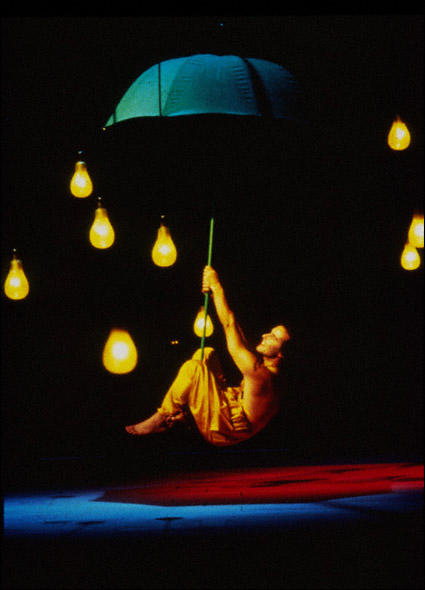 |
| See? Woods. |
 |
See? Lights.
|
I was in the Castle Amphitheater version, and watched the one on Netflix to compare. This was the same bewildering adaption that was talked about in a previous post. For the purpose of some third party opinion, I'm comparing a scene that didn't involve Hippolyta at all. Act II, scene I, we happen upon Robin Goodfellow and the first fairy. They have their banter, and then Oberon and Titania appear. In our play, the set is minimal, yet indicative. We did not have plastic trees or otherwise, but we were outside, nestled in woodland all around. And we attempted some semblance of flowers and nature in these fairy scenes. The 1996 movie adaption, on the other hand, did not use that same set or even setting. All around the fairies are floating lightbulbs--and that's all. No decorations otherwise, no true set. This was somewhat true of the other spaces in the movie. The scenes all seemed enclosed in their separate sets and were surrounded by some sort of blue fog. Instead of the liminal traveling space between sets, such as pathways, doorways, etc., the liminal space was fairly literal in that there was just nothing in time and space connecting these different places. The fairy scene is the most obvious. There was simply nothing save a few lights. This was an obvious decision to increase the dream aspect, which this adaptation played upon a lot using the actual dream inside a little boy's head as the setting of the entire play. In our version of this scene the fairies are literally in the woods when they interact, drawing more upon the dark human qualities that they possess. The vast difference in setting made for a very unique perspective on the scene. These fairies exist merely in a dream. There is no Titania, no Oberon, no Puck--all are merely a figment-an apparition in one child's mind. This could be an amped up telling of the performing aspect. We've already seen how performance plays a role in this play, but what if the use of a child being the audience of the play, and us being the audience to him, is merely a commentary on just how little in the world is unobserved, and authentic. The literal dream interpretation begs the question of who is dreaming, and who is actually experiencing life as we see it.


Sounds like a really interesting set... Did you like it, though? What did you think of the kind of disconnected 'liminal space' thing? Did it work well or no?
ReplyDeleteI didn't love it. I thought it was an interesting choice, and very creative, but not necessarily very real or honest.
DeleteIn the Castle Amphitheater production, both the real-life woods and the modern setting made the whole thing seem more based in reality. Even though the fairies still had an otherworldly feel to them from their costumes and acting, they didn't seem like figments of someone's imagination. I didn't see the Netflix version, but it seems to me that making it so blatantly dreamlike would have some disadvantages like making it harder for the audience to feel connected to the characters, which was something I liked about the Castle Amphitheater version.
ReplyDeleteThat's how I felt! It was meant to be one big dream. Very literal, in a titular sense haha.
Delete